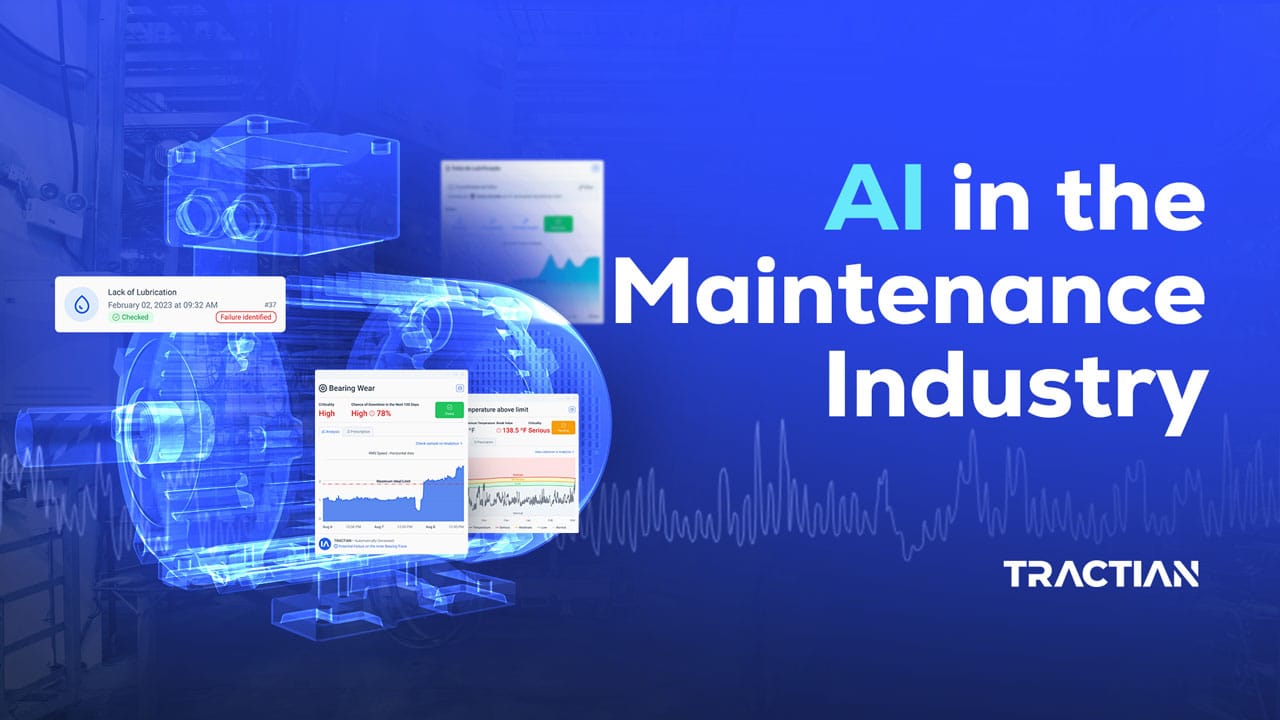Artificial intelligence (AI) is significantly transforming the industry.
From process optimization to task automation, AI is enabling companies to improve efficiency, reduce costs, and increase the quality of their products with much lower investments than the returns it offers.
But first, we must learn what it is.
What Is Artificial Intelligence?
AI is simple – it’s how machines can perceive, synthesize, and infer information. Although it may seem far-fetched, artificial intelligence has already integrated into our daily lives in many forms, including:
- Autocorrect
- Facial recognition (smartphone Face ID)
- Google Translate
- Map navigation
- Mobile check deposits/online payments
- Plagiarism checkers
- Recommendation systems
- Ridesharing apps (Lyft, Uber)
- Social media
- Spam filters
- Virtual assistants (Alexa, Cortana, Siri)
Using machine learning and AI in manufacturing is no different than these everyday examples.
Recent data shows that AI has the potential to increase profit margins by 38%. And, by 2035, it could contribute to the growth of 16 different industries by approximately $2.8 billion.

With this growth in mind, let’s go over how our AI-powered Internet of Things (IoT) sensors work.
TRACTIAN IoT Sensors: Features and Operation
Industrial production processes are arduous and complex tasks.
Arduous, because they tend to involve long working hours and risks to workers’ safety when machines are in poor condition. Complex, because they require extensive technical knowledge and very specific training.
Using artificial intelligence in maintenance allows teams to simplify, optimize, and strengthen industrial plant processes.
But how, exactly? At TRACTIAN, we developed a solution driven by AI and IoT that integrates hardware and software to monitor industrial assets.
We’ve started with two sensors:
- Smart Trac monitors assets using vibration analysis
- Energy Trac monitors asset current, power, and energy consumption
Sensors play a crucial role in transforming maintenance operations in industrial plants, so it’s important to understand how they work.
Using AI in Preventive and Predictive Maintenance
Developed for the improvement of maintenance routines, the combination of hardware and software is necessary for monitoring critical assets. These preventive and predictive strategies indicate the direction that all industrial operations are heading.
Usually combined with asset monitoring, the goal of preventive maintenance tasks is to avoid failures before they happen. It stops production on a scheduled basis, allowing maintainers to carry out planned maintenance like equipment overhauls, inspections, and part replacement.
Some benefits of using a preventive maintenance strategy include the optimization of resources, prevention of accidents, and increase in operation performance. For more on the different types of maintenance, check out this blog.
Preventive maintenance has evolved into prescriptive – or proactive – maintenance. The monitoring of industrial assets is done online, meaning that both data collection and analysis happen in real time. It also eliminates the need to outsource to a company or to train professionals, making it easier to optimize resources.
Companies utilizing this type of analysis are already experiencing these benefits in their day-to-day operations.
A transition from preventive to prescriptive analysis in industrial plants means that machine failures are diagnosed before they happen. This change involves a radical shift in the current maintenance paradigm. Driven by technologies like AI and IoT, prescriptive maintenance is taking the industry’s potential to another level.
How Smart Trac Transforms Maintenance Techniques
Smart Trac, the TRACTIAN IoT sensor, can fully generate actionable preventive and prescriptive maintenance plans for any type of industrial plant.
Smart Trac uses an internal accelerometer to measure changes in machine vibration. That vibration signal is transmitted to a controller inside the sensor. Then, the sensor processes the data and transmits it via wireless connection to the TRACTIAN platform.
Once our platform receives the information, our patented algorithm analyzes the data collected by the sensor. Based on this information, it can detect patterns that indicate when the asset has a problem – before they even happen. It also creates prescriptive insights and action plans.

So, how does Smart Trac get ahead of these problems?
Our online condition monitoring system is capable of measuring the triaxial vibration of a machine up to 32 kHz. It produces a full-waveform spectrum that’s updated every 5 minutes, automatically detecting trend deviation. The system can also collect surface temperatures up to 194°F.
The platform classifies the information in a historical database, comparing it with that of thousands of similar machines.
Smart Trac provides all the features needed to combine predictive and prescriptive maintenance:
- Analyzes data to determine the health of an asset
- Checks metrics according to 100% customizable criteria
- Produces reports and work orders with an intuitive interface
- Automates preventive actions
- Organizes the work routines of industrial maintenance teams
This process, which combines prescriptions and diagnostics, reduces the complexity of any operation, regardless of its size. It ensures better asset performance and an extension of their useful life, optimizing maintenance plans as a whole.
Because our system detects 70+ different faults of rotating equipment, the maintenance team can expect insights that specify, among many others:
- Changes in configuration, material processed, or asset speed
- Wear
- Unbalance
- Misalignment
- Mechanical looseness
- Abnormal vibration peaks
- Gear train failures
- Bearing failures
- Lack of lubrication
- Filter wear
- Cavitation
In addition to indicating possible failures before they occur, it tells you the possible causes and which points to check.

Management systems show different faults identified in an asset, their possible causes, and the points to check to prevent possible failures. Thanks to AI and machine learning, the system never stops learning from your machines, and those of thousands of other factories.
Its installation is simple, and the fastest of any on the market. Our sensors are plug & play; connecting them to the asset you want to monitor is neither invasive nor harmful. To send the data it collects to the cloud, it needs nothing more than access to a 4G/LTE network. Configuration is done via a QR code and registration in the app.
Smart Trac lets maintenance teams perform effective and accurate interventions on assets that require attention, before failure causes unplanned downtime.

Energy Trac: Total Control over Energy Consumption
Energy Trac, the TRACTIAN energy consumption sensor, assesses the quality of the energy network and presents the analysis in real time.
Its main goal is to help companies control and optimize energy consumption in their facilities. Using current sensors, it measures energy consumption at different points in the power grid. That information is then transmitted to TRACTIAN’s cloud-based analysis platform.
The energy analysis performed by the sensor is organized along three main axes.
- The first axis is about the condition of the power grid. Real-time asset monitoring generates a true picture of how energy is being used through the calculation of key energy indicators.
- The second axis is precisely the values that the sensor allows plant personnel to keep under control. Energy Trac constantly monitors the main values measured in any electrical network. They include three-phase current and voltage, active and reactive power, and power factor.
- Finally, the energy efficiency axis focuses on helping the maintenance team grasp energy consumption patterns clearly. It ranges from energy consumption and tariff to an actual consumption calculation that helps lower the cost of electricity bills.
An integrated and effective system is produced by IoT sensors that combine with a platform. It receives, classifies and analyzes data through artificial intelligence and machine learning, helping to strengthen decision making.
Tractian AI: 2 Million New Learnings Every Day
Aside from the sensors themselves, the AI that integrates the hardware to make a complete solution is what increases product value.
Companies are currently challenged by knowing what to do with the amount of data their activities produce. They all face the situation in the same way, from manufacturing to finance and logistics.
Our machine learning model increases the precision of its insights as the number of machines in the TRACTIAN monitoring system increases. As a result, it can accurately diagnose and prescribe treatment.
We aren’t the only solution combining AI and IoT applications to identify faults and plan industrial maintenance. But, the level of detail our algorithms can process in simple and intuitive visualizations isn’t found in other competitors.
Some software on the market can tell when an asset presents an anomaly. Only
Aside from the sensors themselves, the AI that integrates the hardware to make a complete solution is what increases product value.
Companies are currently challenged by knowing what to do with the amount of data their activities produce. They all face the situation in the same way, from manufacturing to finance and logistics.
Our machine learning model increases the precision of its insights as the number of machines in the TRACTIAN monitoring system increases. As a result, it can accurately diagnose and prescribe treatment.
We aren’t the only solution combining AI and IoT applications to identify faults and plan industrial maintenance. But, the level of detail our algorithms can process in simple and intuitive visualizations isn’t found in other competitors.
Some software on the market can tell when an asset presents an anomaly. Only TRACTIAN can inform what the fault is and suggest a prescriptive action plan to address it.
Initial Health Report: Asset Diagnosis and Treatment
When installing TRACTIAN sensors, maintenance teams are often concerned about knowing the asset health of the machines they want to monitor.
Our solution for this is called the Initial Health Report. It’s a starting point for the standardization of condition monitoring to be performed from then on.
This health report is done before the start of the algorithm’s continuous learning processes. It offers an overview of whether the asset shows signs of failure through metrics and comparisons.
Based on a comparison of the same machines, a health metric is created for each asset category in the TRACTIAN database. We call this THS, or Tractian Health Standards.
It’s a fixed threshold; in about two days, the diagnosis is made and the report can be evaluated.
TRACTIAN processes a great amount of data every day; we can determine when a measurement isn’t the asset standard. We can then inform the maintenance team, even during the learning stage.
We’ve created a monitoring and prevention ecosystem that takes care of your machines. It integrates all the maintenance needs of an industrial plant into a single platform, regardless of its size or sector.
Examples of AI Used in Maintenance Strategies
Currently, there are multiple AI solutions that meet the needs of maintenance plants in the United States.
However, our main competitive advantage for plants that still use corrective or reactive maintenance is the increase in their ROI. Our solution is more cost effective, giving maintenance teams the ability to prevent unexpected downtimes instead of buying new parts.
For example, let’s take a look at our success case with Yara. In only 15 months they monitored 200 assets, and were able to make 4.1 million collections; of those collections over 1,300 insights were generated, including 141 faults.
Of the 141 faults, there were failures that – had they not been fixed in advance with the platform alerts and prescriptions – would have stopped production for 24+ hours and cost no less than $13,000 per failure.
Using predictive maintenance strategies alongside the TRACTIAN solution gave Yara a massive boost in both ROI and reliability.
Our solution compares plant operation with itself and our entire database, giving TRACTIAN the capacity to grow at the same pace as the needs of its thousands of customers.

Still comparing solutions? Don’t forget to take ROI into account.
Using the TRACTIAN system, these companies can identify failures early on and forget about emergency corrective actions. Our solutions are designed for prescriptive maintenance that reduces additional costs, production downtime and safety risks for the technical team.
The industry is evolving at an incredible pace; we have to seize the opportunity today in order to see results tomorrow.
See why TRACTIAN has the best condition monitoring solution in the industry; schedule a demonstration today.


